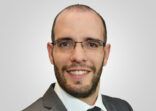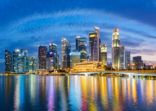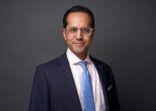In Asia, absolute return funds are not easy to manage for various reasons that include regulatory restrictions. For example, some markets do not permit short-selling, Ng told FSA.
Absolute return is the return that an asset achieves over a certain period of time. It differs from relative return because it is concerned with the return of a particular asset and does not compare it to any other measure or benchmark.
In Asia, the retail fund offerings are mainly relative return-oriented funds, as the comparably high volatility in Asian equities makes it difficult to deliver absolute returns and no material losses, he said.
“We have an absolute return fund [The Affin Hwang Absolute Return Fund], with 70% exposure to equities,” Ng said. “You may have been misled by the name. It is not a hedge fund, but it’s an actively managed long-only fund and we don’t take short positions.”
Still, there are some differences compared to other long-only mutual funds, he said.
“The style of managing funds across our firm is essentially the same. The slight difference between this fund and other retail offerings is that we have an absolute benchmark.”
He said the fund has an 8% absolute benchmark, as opposed to an index as a benchmark, meaning that the fund targets a fixed rate of return, rather than using the performance of an index as a benchmark.
“We are a lot more active in terms of asset allocation because this is the only way we can preserve capital if we think the markets are in difficult periods,” he said.
When the fund was launched in 2007, the phrase “absolute return” did not necessarily connote that it was a hedge fund, as it does today, Ng said. The name was chosen because the product has an absolute-return benchmark.
“When it was first launched, it was managed by somebody else externally as a global fund. It was challenged during the global financial crisis and didn’t reach the target AUM.
The firm has since made some changes — Ng took over the fund in 2012 — but kept it’s global investment mandate. “Technically we can invest anywhere, but we have made it more Asia-focused.”
Wedding cake structure
The absolute return fund has a three-tier structure, which is similar to the form of a three-layer Christmas cake or wedding cake, Ng said.
The first tier is quality and stability, he said. “In the current environment, a lot of those would be dividend-yielding stocks and income-generating assets, which serve as the base of the wedding cake.”
The second tier is structural growth, which includes names and operating industries that are still growing, even though the global operating environment is very soft and weak, but these companies continue to grow, he said.
“For example, we are looking at some ecommerce companies, as they still have strong earnings growth even though the global market is not doing well. The only thing is that these names are not cheap.”
The first two tiers make up about 50-70% of the portfolio, while the third tier is related to names that tracks positive market movements during different periods, he said.
“What we are seeing over the past year and the next few years is that the Asian equity markets are going to be extremely volatile. So, we are looking for cyclical names for the third tier investments.”
For example, the firm added exposure to the China National Offshore Oil Corporation (Cnooc) earlier this year based on expectations that oil prices have bottomed out.
___________________________________________________________________________________
The Affin Hwang Absolute Return fund has been underperforming the MSCI World Index since the start of 2015, according to FE Analytics.

















